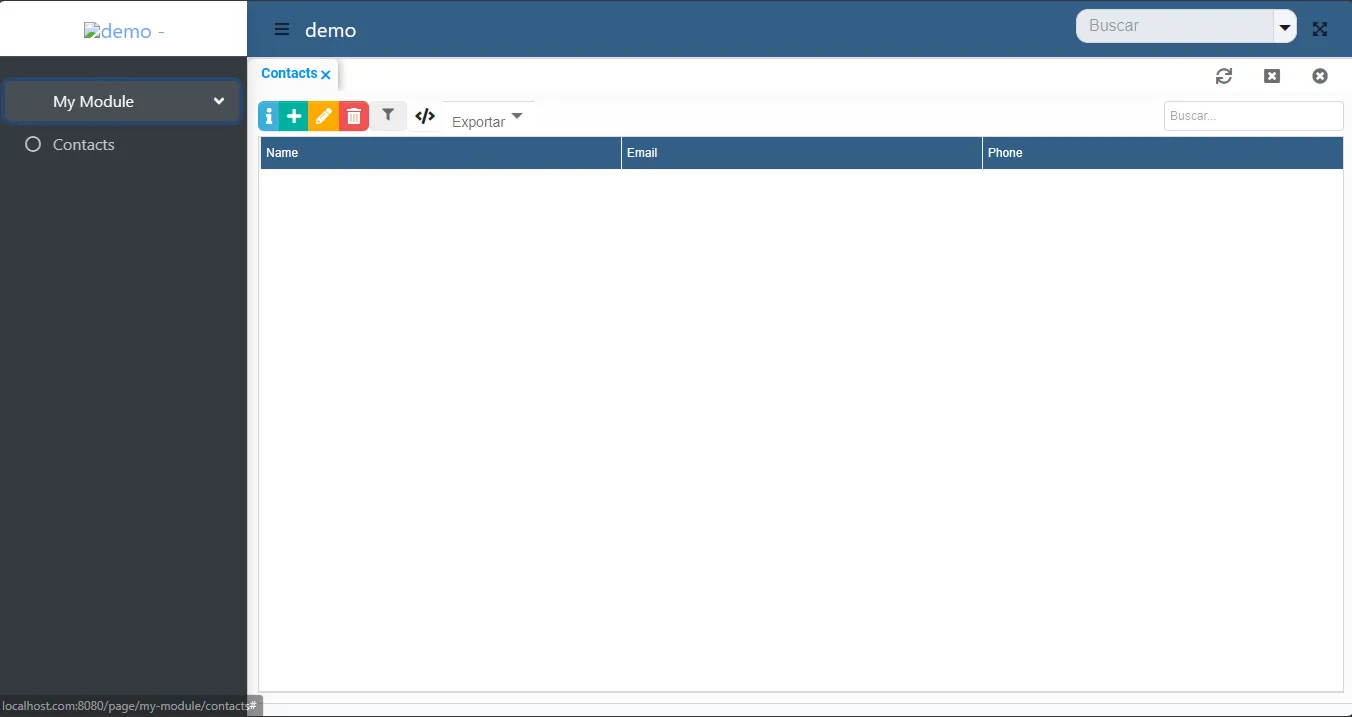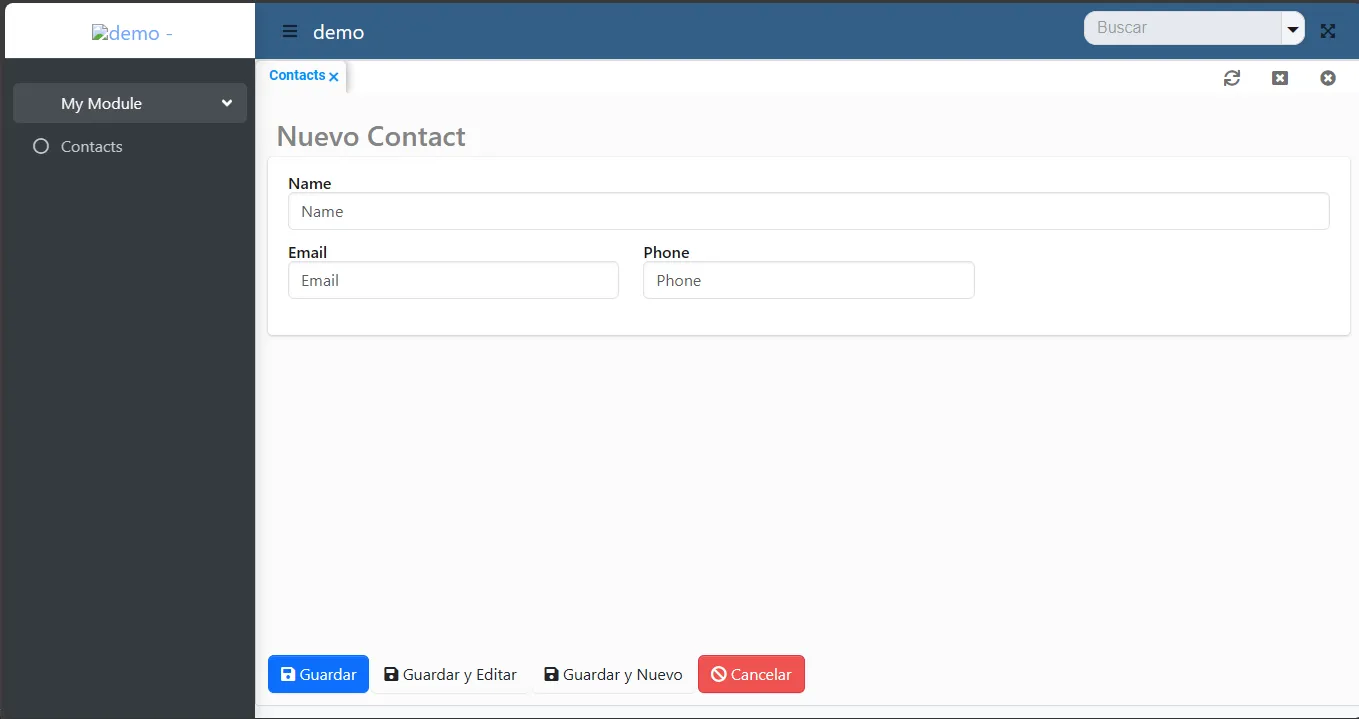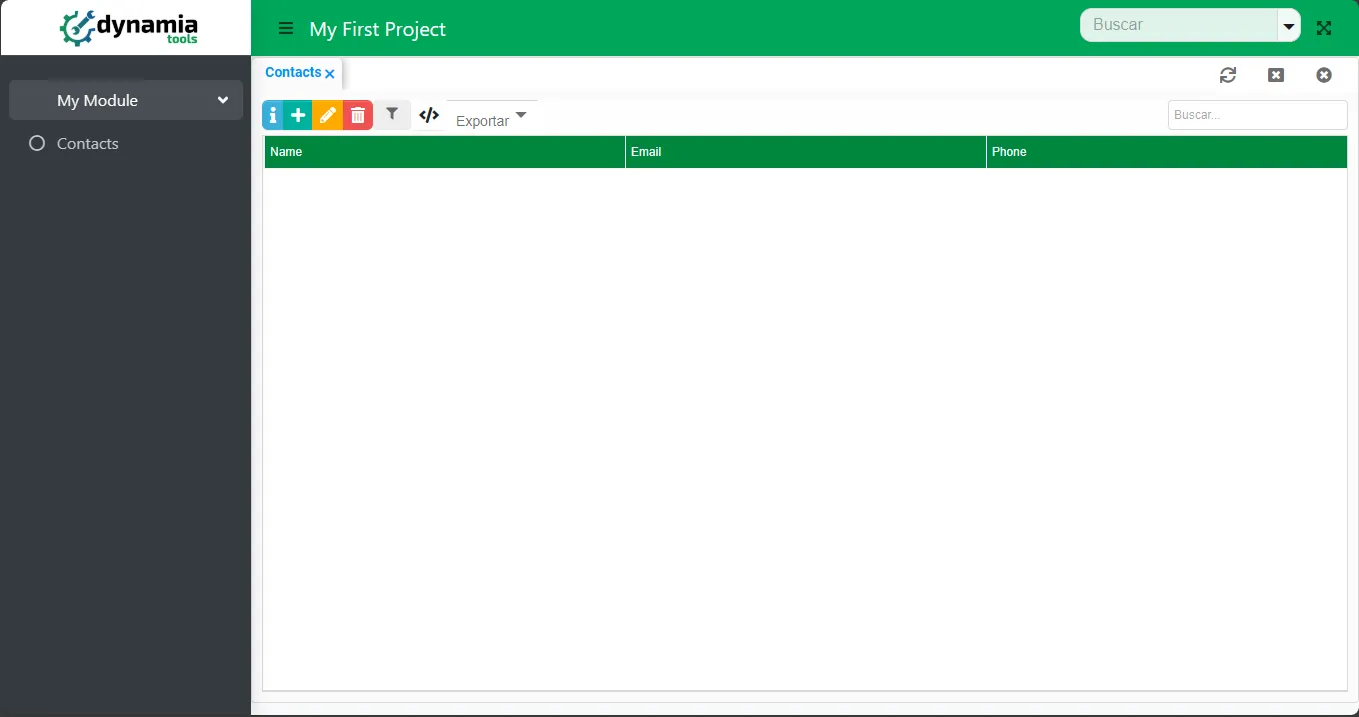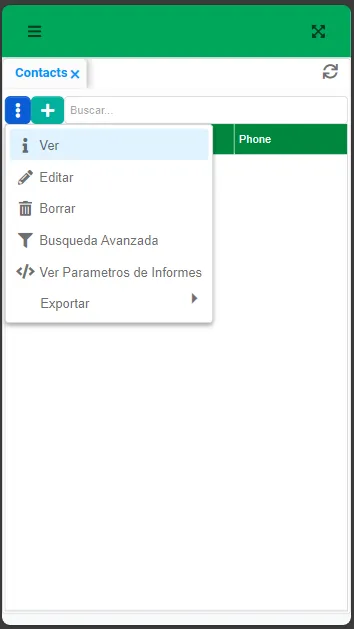Getting Started
Installation
Section titled “Installation”- Create a new SpringBoot project using https://start.spring.io and select Web, JPA and a programing language for your Spring Boot app. DynamiaTools is compatible with Java, Groovy and Kotlin
- Download and import it in your IDE
- Add DynamiaTools starter dependency.
Maven
<dependencies> <dependency> <groupId>tools.dynamia</groupId> <artifactId>dynamia-tools-starter</artifactId> <version>LAST_VERSION</version> </dependency></dependencies>Gradle
compile 'tools.dynamia:dynamia-tools-starter:LAST_VERSION'Go to Maven Central to check last version.
This starter enable DynamiaTools in your application and add support for ZK, JPA and custom views and routes.
- Run and done
package demo;
import org.springframework.boot.SpringApplication;import org.springframework.boot.autoconfigure.SpringBootApplication;
@SpringBootApplicationclass MyApplication {
public static void main(String[] args) { SpringApplication.run(MyApplication.class, args); }
}After running the application, open your browser and go to http://localhost:8080. You should see a blank page with a fully functional HTML template called Dynamical. Later will customize this page

First project
Section titled “First project”Let’s create something useful, like a contact CRUD to store our contact list. To create a CRUD in Dynamia Tools, follow these 3 steps:
- Create a JPA entity
- Create a Dynamia module
- Define a view descriptor for form and table views
1. Create a JPA entity
Section titled “1. Create a JPA entity”Let’s create a new class called Contact and annotated with @Entity to create a JPA entity. Add the fields name, email and
phone.
package demo;
import jakarta.persistence.Entity;import jakarta.persistence.Table;import jakarta.persistence.Id;import jakarta.validation.constraints.NotNull;
import jakarta.persistence.*;import jakarta.validation.constraints.Email;import jakarta.validation.constraints.NotEmpty;
@Entity@Table(name="contacts")public class Contact {
@Id @GeneratedValue(strategy = GenerationType.AUTO) private Long id;
@NotEmpty private String name; @Email private String email;
private String phone;
public Long getId() { return id; }
public void setId(Long id) { this.id = id; }
public String getName() { return name; }
public void setName(String name) { this.name = name; }
public String getEmail() { return email; }
public void setEmail(String email) { this.email = email; }
public String getPhone() { return phone; }
public void setPhone(String phone) { this.phone = phone; }
@Override public String toString() { return name; }}This is a simple POJO class annotated with standard JPA annotations. Note that you can also use Validations annotation
2. DynamiaTools modules
Section titled “2. DynamiaTools modules”DynamiaTools modules are standard Spring component classes that implement the tools.dynamia.navigation.ModuleProvider
interface and return a new tools.dynamia.navigation.Module object. Think of Dynamia modules as routers that define the navigation for pages.
package demo;
import org.springframework.stereotype.Component;import tools.dynamia.crud.CrudPage;import tools.dynamia.navigation.Module;import tools.dynamia.navigation.ModuleProvider;
@Componentpublic class ContactModuleProvider implements ModuleProvider {
@Override public Module getModule() {
Module myModule = new Module("my-module", "My Module"); myModule.addPage(new CrudPage("contacts", "Contacts", Contact.class));
return myModule; }}Modules includes an ID, name, pages and pages groups. On the other hand the Pages include ID, name and path, which
in this case is represented by an entity Class. IDs are crucial because they define the path for your pages. For instance,
the Contact crud page has the path /pages/my-module/contacts.
3. View descriptors
Section titled “3. View descriptors”View descriptors define how the views for entities will be renderer in runtime. By default, DynamiaTools render views for Forms, Tables, Trees, Configs and others. In advanced guides you will learn how to customize view renderers and implement your own Views types.
Descriptors are YMLs files with fields and parameters for entity classes. Lets create a folder for then in /resources/META-INF/descriptors a
nd create the file ContactForm.yml. The name of the file is not special but for good practice name it using the entity name and the view type.
view: form # requiredbeanClass: demo.Contact # use fully qualified class name
fields: name: params: # customize component and layout span: 3 email: params: type: email # setup type attribute of ZK textbox component phone: component: textbox #optional because string field are renderer link Textbox
#optionallayout: columns: 3Now create a view descriptor for the table view ContactTable.yml
view: tablebeanClass: demo.Contact # use fully qualified class name
#all field are rendered like Labels because view type is tablefields: name: email: phone:4. Run and enjoy
Section titled “4. Run and enjoy”Now your app has a new menu called My Module and a submenu called Contacts. This is a fully functional CRUD with create, read, update, delete and many more ready to use actions.
Table View
Section titled “Table View”
Form View
Section titled “Form View”
Customize your first project
Section titled “Customize your first project”Use standard Spring Boot application.properties or application.yml files to customize global settings for dynamia tools projects.
Use dynamia.app properties groups for dynamia tools.
dynamia: app: name: My First Project short-name: MFP default-skin: Green default-logo: /static/logo.png default-icon: /static/icon.png # used when navigation bar is collapsed url: https://www.dynamia.tools
#other spring boot settingsRe-run your application and this time is beautiful app

Responsive

Dynamical is a Bootstrap 5 free template fully responsive, check https://github.com/dynamiatools/theme-dynamical for documentation
Automatic REST
Section titled “Automatic REST”You’ve just built a full-stack project with DynamiaTools in about 10-15 minutes. Your project includes some special features,
one of which is an automatic RESTful endpoint for all CrudPages. Create some contacts in the front end, then replace the browser
URL with http://localhost:8080/api/my-module/contacts.
You should see a JSON response with your contacts. In my case, I received the following response:
//http://localhost.com:8080/api/my-module/contacts{ "data" : [ { "id" : 1, "name" : "Peter Parker", "email" : "spidy@gmail.com", "phone" : "5556565656" }, { "id" : 2, "name" : "Dr Doom", "email" : "doomed@gmail.com", "phone" : "555-6999-666" }, { "id" : 3, "name" : "Tony Iron Stark", "email" : "ceo@starksindustry.com", "phone" : "5551656565" } ], "pageable" : { "totalSize" : 3, "pageSize" : 50, "firstResult" : 0, "page" : 1, "pagesNumber" : 1 }, "response" : "OK"}Then navigate to http://localhost.com:8080/api/my-module/contacts/1 and get info of contact with ID = 1
{ "data": { "id": 1, "name": "Peter Parker", "email": "spidy@gmail.com", "phone": "5556565656" }, "response": "OK"}Check that DynamiaTool default json form has this form:
{ "data": [], "response": "", "pageable": {}}Congratulations
Section titled “Congratulations”With this Getting Started guide, you’ve just built a web application with automatic CRUD support, automatic RESTful endpoints, and a responsive template. Continue with the following guides to learn advanced topics with DynamiaTools.